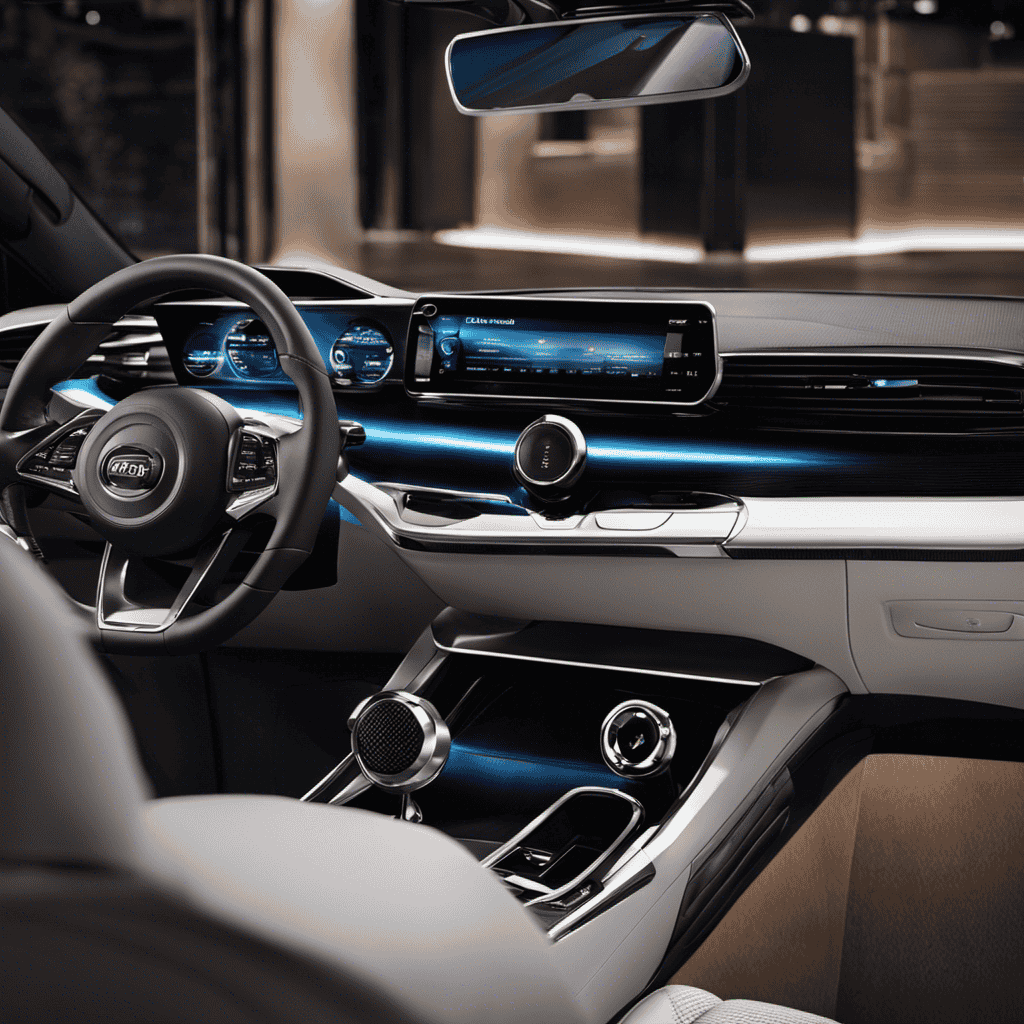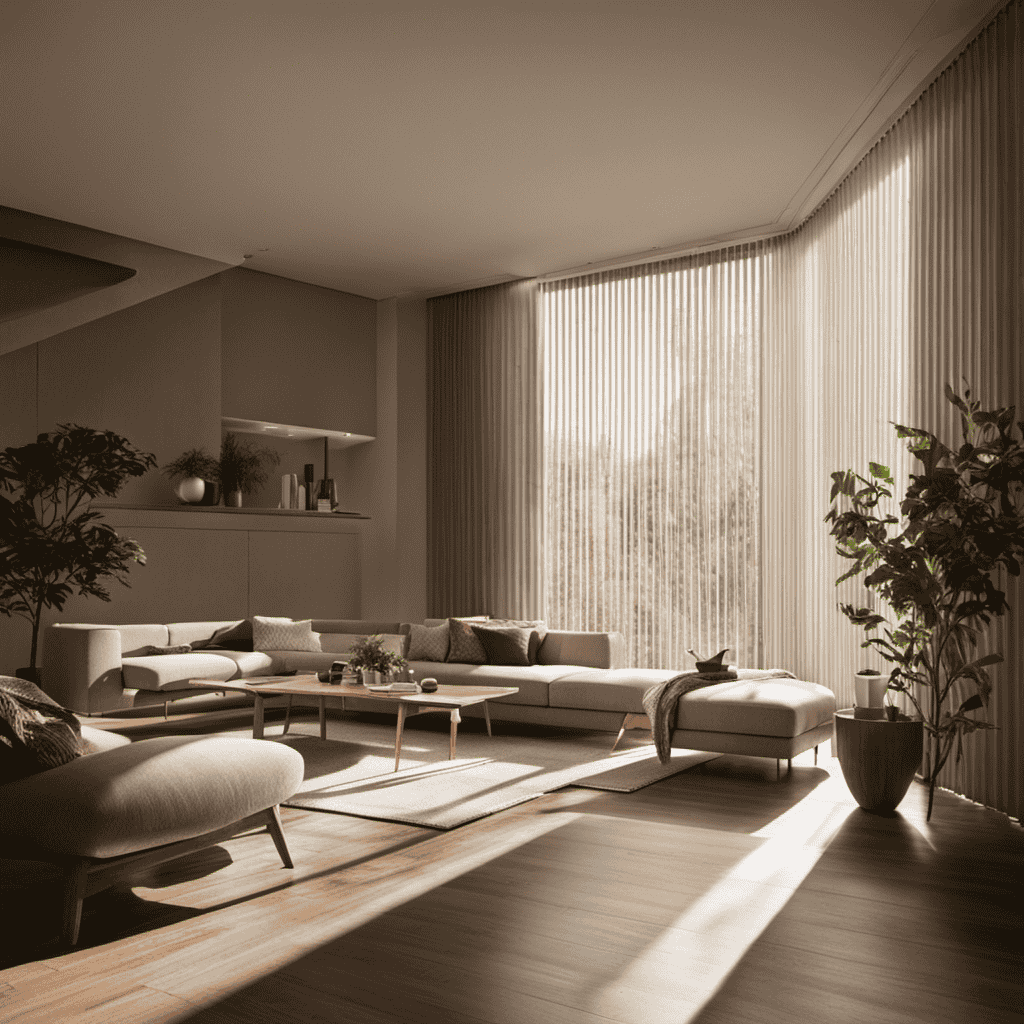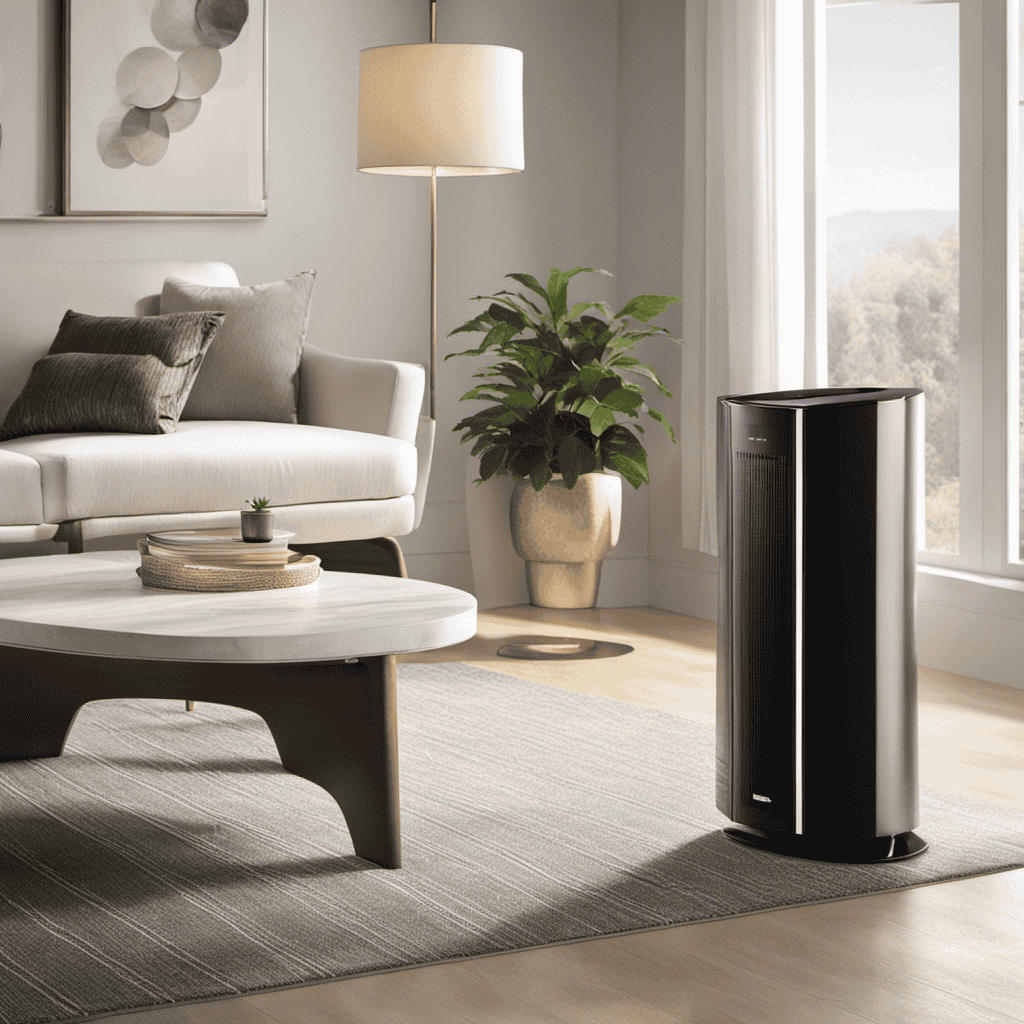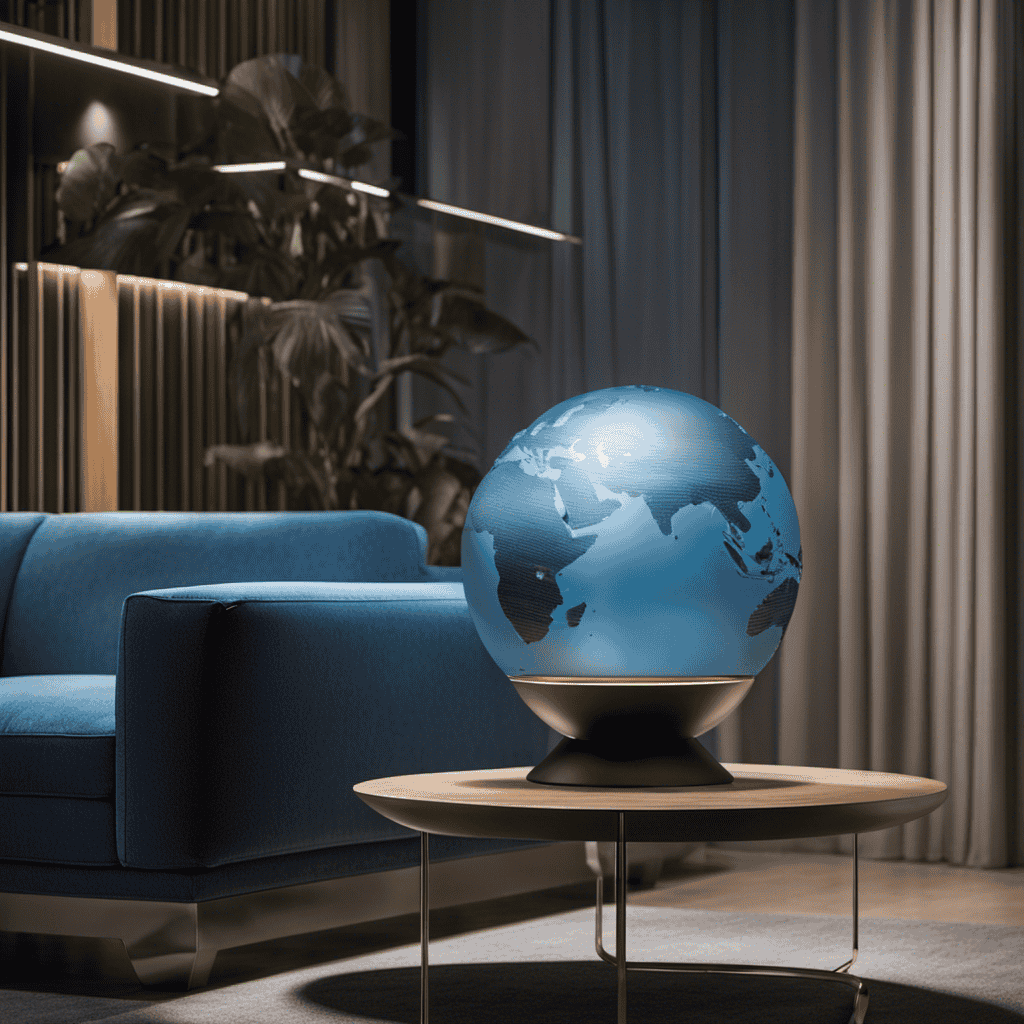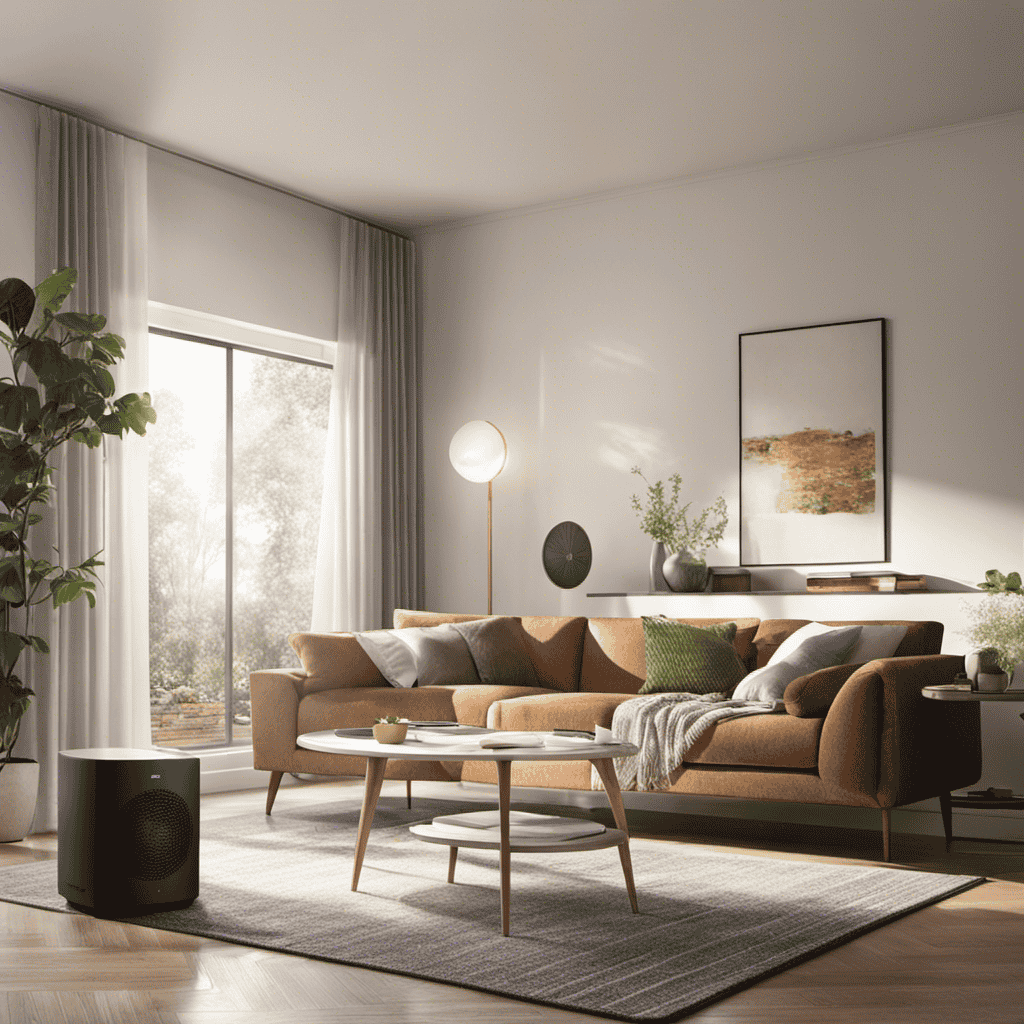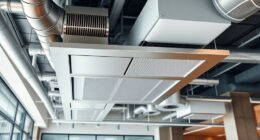As a car lover, I have always viewed a car as a second home on wheels. However, have you ever considered the air quality inside your vehicle?
Just like we use air purifiers in our homes, a car air purifier can make a world of difference in improving the air we breathe while driving. In this article, we’ll explore the benefits of using a car air purifier, how they enhance indoor air quality, key features to consider, common pollutants they tackle, and tips for finding the perfect one for your needs.
So sit back, buckle up, and let’s dive into the world of car air purifiers.
Key Takeaways
- Car air purifiers remove harmful pollutants and allergens from the air, improving air quality for those with respiratory conditions or allergies.
- They neutralize odors such as smoke, food smells, and pet odors, creating a fresh and clean environment inside the car.
- Car air purifiers filter out particulate matter, harmful gases, and volatile organic compounds, reducing health risks and improving well-being.
- Choosing the right car air purifier involves considering factors such as portability, budget, advanced features, and personal preferences to enhance the driving experience.
Benefits of Using a Car Air Purifier
You’ll be amazed at the benefits of using a car air purifier. The advantages are numerous, making it a worthwhile investment for anyone who spends a significant amount of time in their vehicle.
Firstly, the effectiveness of a car air purifier in removing harmful pollutants and allergens from the air is unparalleled. It filters out dust, pollen, smoke, and even bacteria, ensuring that the air you breathe inside your car is clean and fresh. This can greatly improve the air quality, especially for those with respiratory conditions or allergies.
Additionally, a car air purifier can help eliminate unpleasant odors, such as those caused by food, pets, or cigarette smoke. This not only enhances the overall driving experience but also creates a more pleasant environment for passengers.
Overall, the advantages and effectiveness of using a car air purifier make it a valuable addition to any vehicle.
How Car Air Purifiers Improve Indoor Air Quality
Breathe in cleaner and fresher air while driving with an air purifier for your vehicle. Car air purifiers play a crucial role in improving ventilation and reducing allergies. Here are three ways they accomplish this:
-
Removes airborne pollutants: A car air purifier uses filters to capture and eliminate harmful particles such as dust, pollen, and pet dander. This helps improve the quality of air inside your vehicle, reducing the risk of allergies and respiratory issues.
-
Neutralizes odors: Many car air purifiers are equipped with activated carbon filters that effectively remove unpleasant odors, such as smoke and food smells. This ensures that the air inside your car remains fresh and clean.
-
Reduces harmful gases: Some advanced car air purifiers are designed to eliminate harmful gases like formaldehyde and benzene, which can be released from materials inside the car.
Key Features to Look for in a Car Air Purifier
To find the ideal car air purifier, consider the features that will best suit your needs.
When it comes to cost-effective options, look for a purifier that offers long-lasting filters or filter replacements at a reasonable price. This will ensure that you can maintain clean air in your car without breaking the bank.
Additionally, portable and compact car air purifiers are great for those who frequently travel or have limited space in their vehicle. These purifiers are easy to install and can be moved from one car to another, providing clean air wherever you go. The portability factor also allows you to use the purifier in other small spaces like your office cubicle or hotel room.
Common Air Pollutants in Cars and How Purifiers Can Help
When driving in a car, it’s important to be aware of common air pollutants and how they can be reduced with the help of purifiers. Car air purifiers are effective in improving the air quality inside the vehicle, providing several benefits for both drivers and passengers.
Here are some key points to consider:
-
Reduction of particulate matter (PM): Car air purifiers can effectively filter out PM2.5 and PM10, which are tiny particles that can cause respiratory issues and allergies.
-
Elimination of harmful gases: Purifiers equipped with activated carbon filters can remove pollutants like nitrogen dioxide (NO2) and volatile organic compounds (VOCs), improving overall air quality.
-
Odor removal: Car air purifiers can eliminate unpleasant odors caused by smoke, food, or pets, creating a more pleasant and comfortable driving experience.
Having a clean air environment in the car not only ensures better health and well-being but also enhances driving comfort and concentration, making it a worthwhile investment for any vehicle owner.
Tips for Choosing the Right Car Air Purifier for Your Needs
Before making a purchase, consider what specific features you need in a car air purifier to ensure it meets your requirements and enhances your driving experience.
One important factor to consider is portability. If you frequently travel or switch between vehicles, a portable option may be more suitable for you. These types of purifiers are lightweight and easy to install and remove.
Another aspect to consider is the price range. Car air purifiers come in a wide range of prices, so it’s important to set a budget and find a purifier that fits within that range. However, keep in mind that higher-priced purifiers often offer more advanced features and better filtration capabilities.
Analyzing your needs and preferences, as well as considering portability and price range, will help you choose the right car air purifier for you.
Maintenance and Care for Car Air Purifiers
Regular maintenance and cleaning are essential for keeping your car’s air purifier functioning effectively. Neglecting to care for your air purifier can result in a decrease in performance and even potential health risks.
To ensure optimal performance, here are some key cleaning techniques and filter replacement tips to follow:
-
Clean the exterior: Wipe down the exterior of the air purifier regularly with a damp cloth to remove dust and dirt buildup.
-
Vacuum the filters: Use a soft brush attachment on your vacuum cleaner to gently remove dust and debris from the filters.
-
Replace filters as recommended: Check the manufacturer’s guidelines for recommended filter replacement intervals and follow them accordingly.
Frequently Asked Questions
How Long Does a Car Air Purifier Typically Last Before Needing to Be Replaced?
Car air purifiers typically last for a few years before needing replacement. Regular maintenance, such as cleaning the filter, can extend their longevity. It’s important to follow the manufacturer’s instructions for proper care and replacement intervals.
Can a Car Air Purifier Remove Cigarette Smoke and Odors From the Vehicle?
Yes, a car air purifier can effectively remove cigarette smoke and odors from the vehicle. It works by filtering the air and trapping the particles, including pet hair, mold spores, and other pollutants.
Are Car Air Purifiers Effective in Reducing Allergens and Respiratory Irritants?
Car air purifiers are effective in reducing allergens and respiratory irritants. They improve air quality in the vehicle, making it safer and more comfortable. Plus, they are affordable and easy to use.
How Does a Car Air Purifier Differ From a Regular Air Purifier Used in Homes?
A car air purifier differs from a regular home air purifier in size and functionality. It is specifically designed for cars and can effectively remove allergens and pollutants, improving air quality while driving.
Can a Car Air Purifier Improve the Performance of the Car’s Air Conditioning System?
Yes, a car air purifier can improve the performance of the car’s air conditioning system. By removing pollutants and allergens, it helps maintain cleaner air flow, reducing strain on the system and potentially improving fuel efficiency while reducing maintenance costs.
Conclusion
After exploring the benefits, features, and maintenance of car air purifiers, it is clear that they are an essential addition to any vehicle.
Not only do they improve indoor air quality, but they also effectively remove common air pollutants.
By choosing the right purifier and properly maintaining it, drivers can enjoy cleaner and healthier air while on the road.
So, why wait? Invest in a car air purifier today and breathe easier tomorrow.
Your lungs will thank you.
